
Key Points
Much of the weakness in the “growth stocks” and the Technology Sector since the middle of February has been concentrated in the names that can be characterized as “expensive” based on traditional valuation metrics. Arguably, Software falls into this category. After pulling back from all-time highs, the S&P 500 Software Index is, once again, on the verge of trading to record levels. The index is above the rising 200-day moving average and we note that the RSI did not become oversold during the consolidation, indicating that trend and momentum remain to the upside.
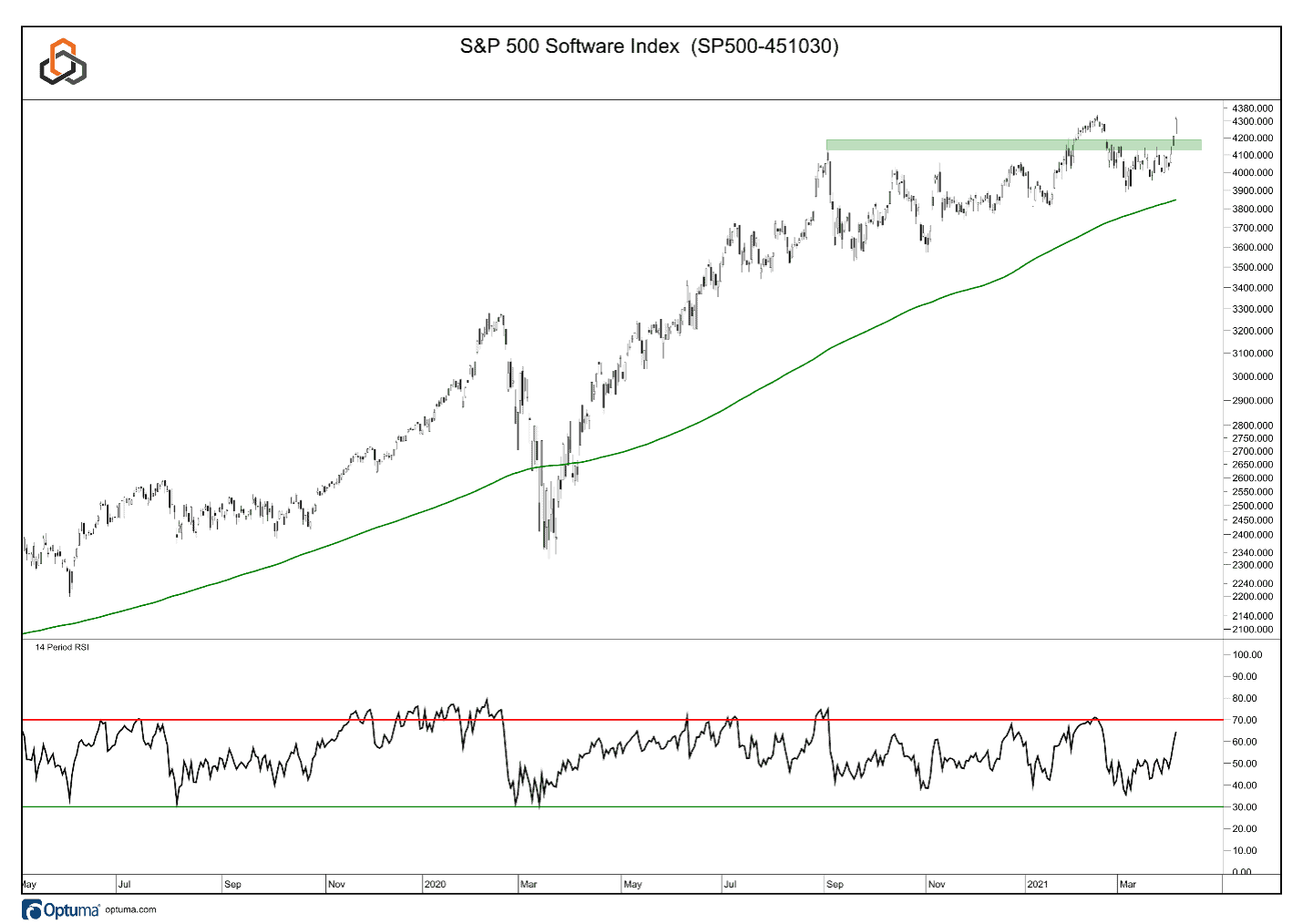
Why is this important? Yesterday we pointed out that Semiconductors were beginning to turn higher. With Software now threatening new highs, the pieces are beginning to fall into place for the Technology Sector to begin to lead once again (see below). With the largest weight in the S&P 500, this would be a data point that supports a continuation of the bullish equity trend.
Visiting the Sector Relatives
All the charts in today’s Research will look at the individual sector indexes relative to the S&P 500 to get a sense of leaders, laggards and shifts in relative trends. The bottom panel of the charts shows the 14-day RSI of the relative ratios.
Materials
The S&P 500 Materials Sector has been chopping higher relative to SPY since the pandemic lows last March but has exhibited some signs of stalling of late. The RSI is in the middle of the range and has not become oversold since March 2020. There is resistance just overhead that must be broken for the bullish trend to remain in place. The 200-day moving average has been support to pullbacks for the group.
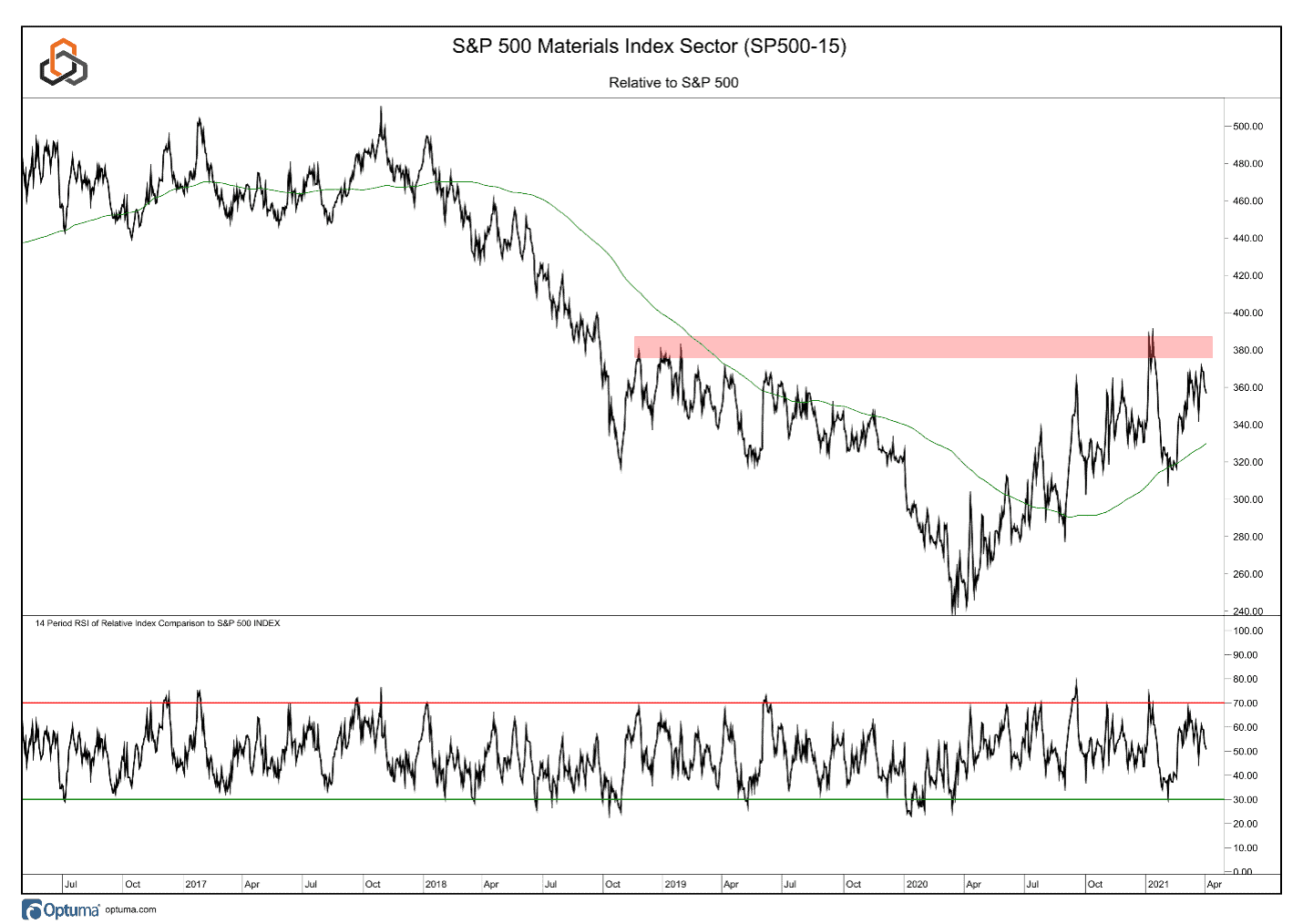
Communication Services
On a relative basis, the Communication Services Sector is rebounding from a recent sell off stemming from the forced liquidation of names such as VIAC and DISCA. The selling pressure abated near the rising 200-day moving average and the RSI held bullish ranges, indicating that momentum remains to the upside.
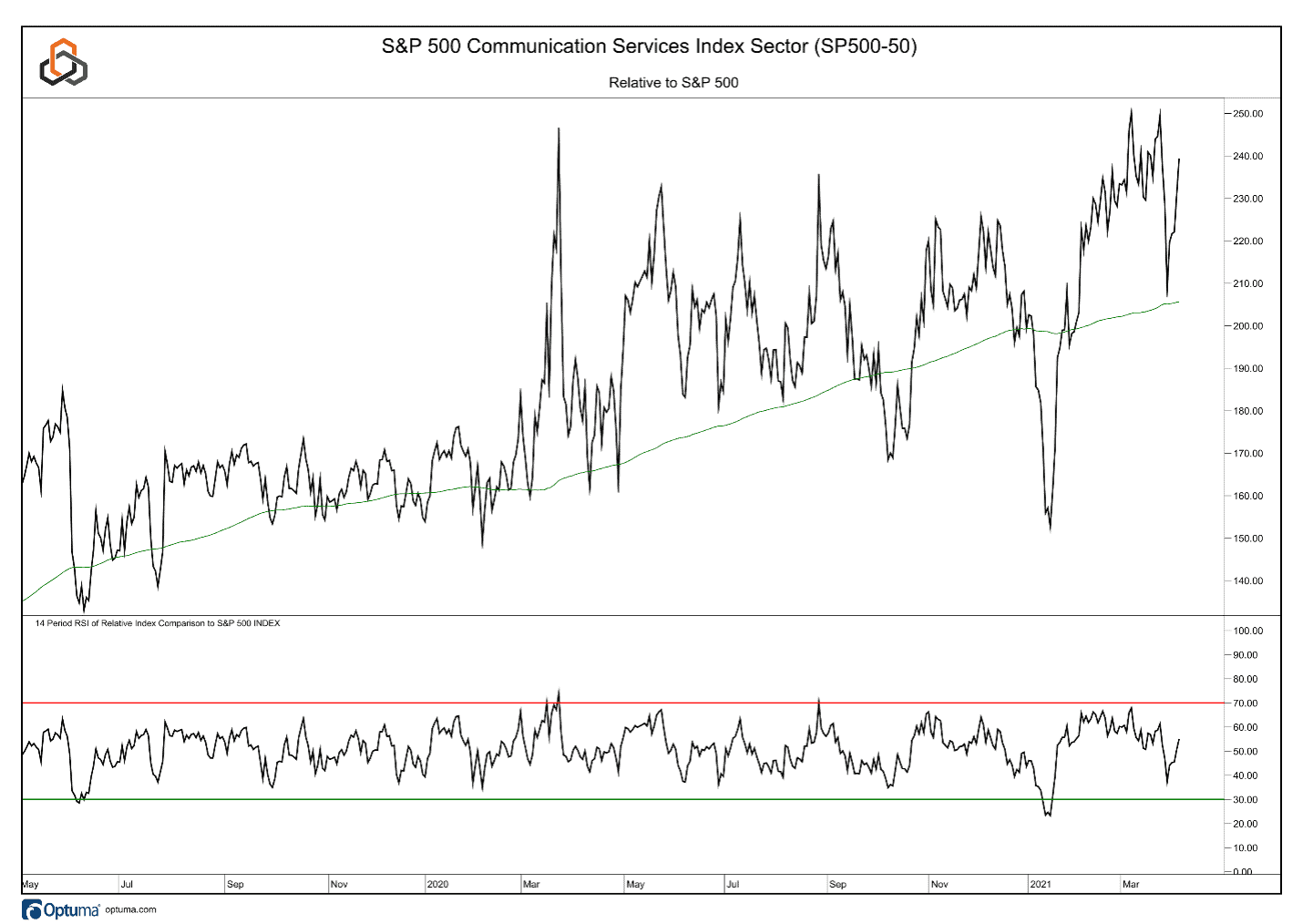
Financials
The Financials Sector is consolidating a strong move to the upside at a near-term support level as the rise in interest rates has been a positive for the banks that are members of this group. The consolidation follows an overbought RSI reading but we note that this indicator remains in bullish ranges. The Financials are trading above the rising 200-day moving average. Trend and momentum point to support likely holding, setting the stage for a resumption of the uptrend that has been in place since November.
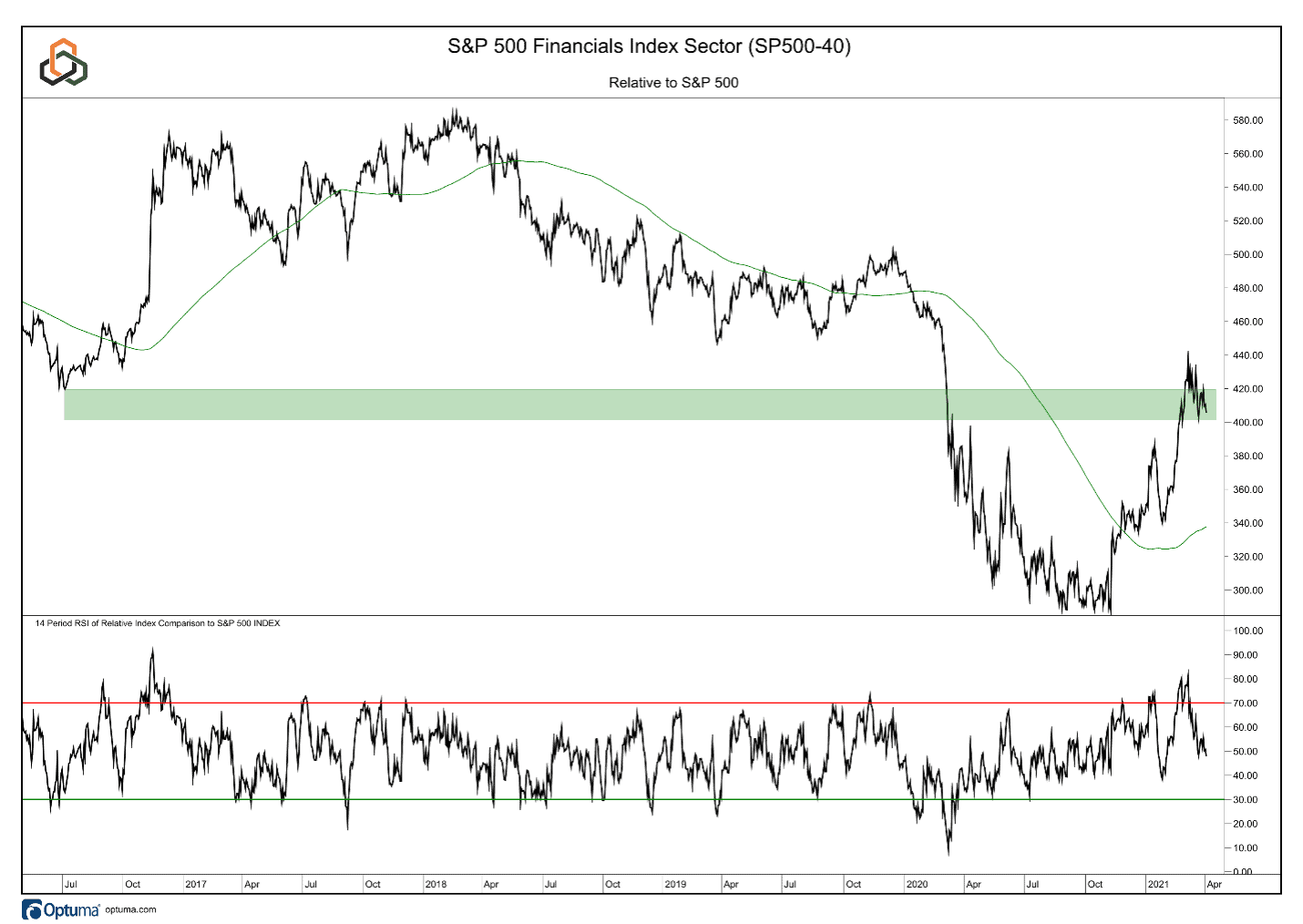
Industrials
The Industrials are moving higher in a choppy trend above the rising 200-day moving average which recently acted as support. The RSI of the ratio has not been oversold since the depths of the pandemic, supporting the bullish price trend. In the near-term, it would not be surprising to see a consolidation for this group which has been the winner as the cyclical reopening theme plays out.
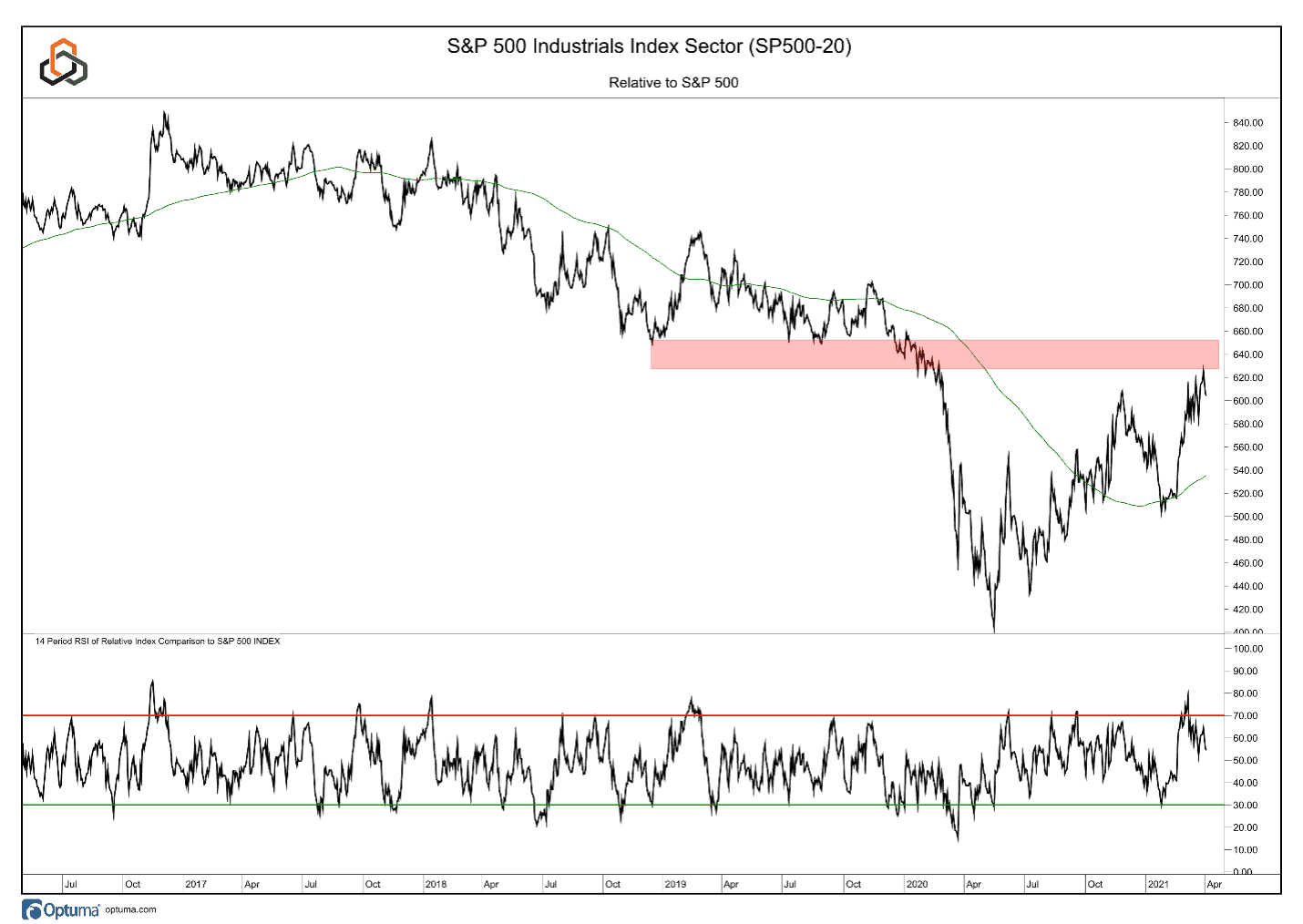
Technology
The Technology Sector remains in a consolidation relative to the S&P 500 and has, thus far, held support at the lower bound of the pattern. While it is encouraging to see that the RSI has rebounded above the 50 level, we do note that the ratio is trading below the 200-day moving average which is transitioning from rising to flat. Retaking this key measure of long-term trend would be a step in the direction of Technology regaining a leadership position.
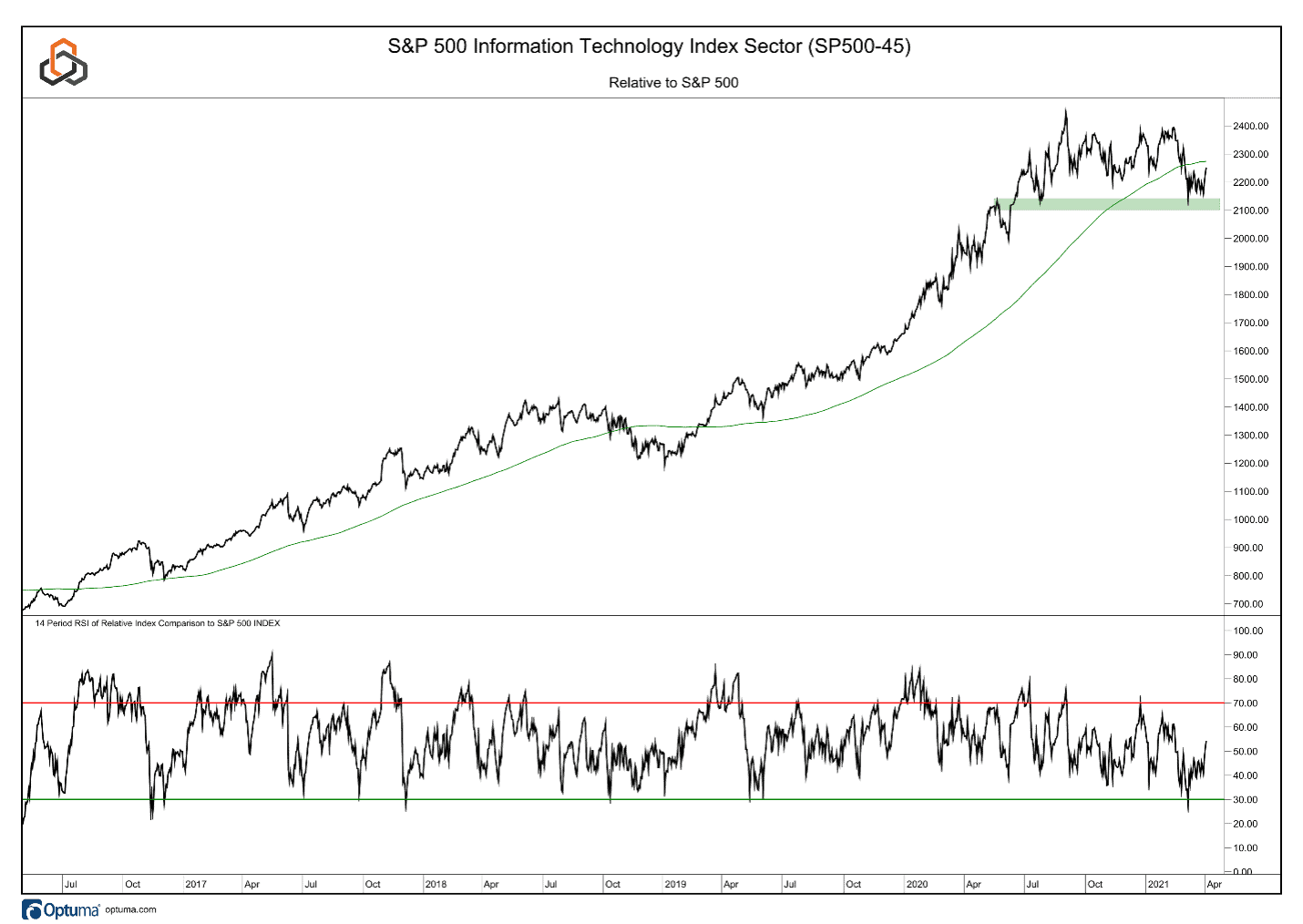
Consumer Staples
Staples are a “defensive” sector and they have been under relative pressure since the cyclical bull market began in March 2020. Over the past month, the group has tried to rally but remains below resistance at the 2018 lows, a welcome data point for equity bulls as this defensive group remains under relative pressure. From a trend perspective, the ratio remains below the declining 200-day moving average.
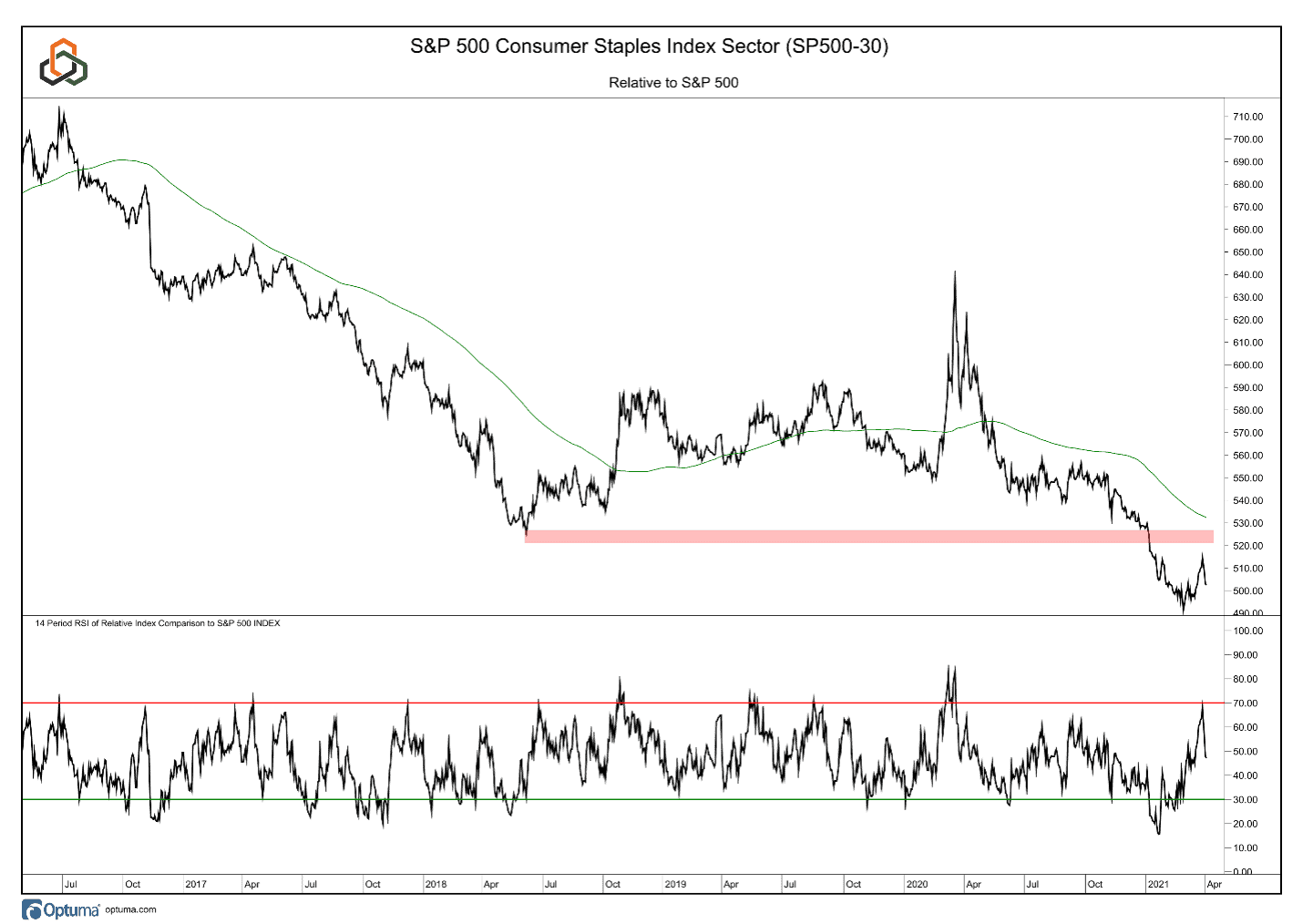
Real Estate
The REITs are another of the “defensive” groups that has been in a pronounced downtrend over the past five years. Like the Staples, REITs have tried to rally in the near-term but remain below resistance and the declining 200-day moving average. Despite the near-term rally, the RSI failed to reach an overbought level. Until resistance is broken, odds favor continued underperformance for this defensive sector of the market.
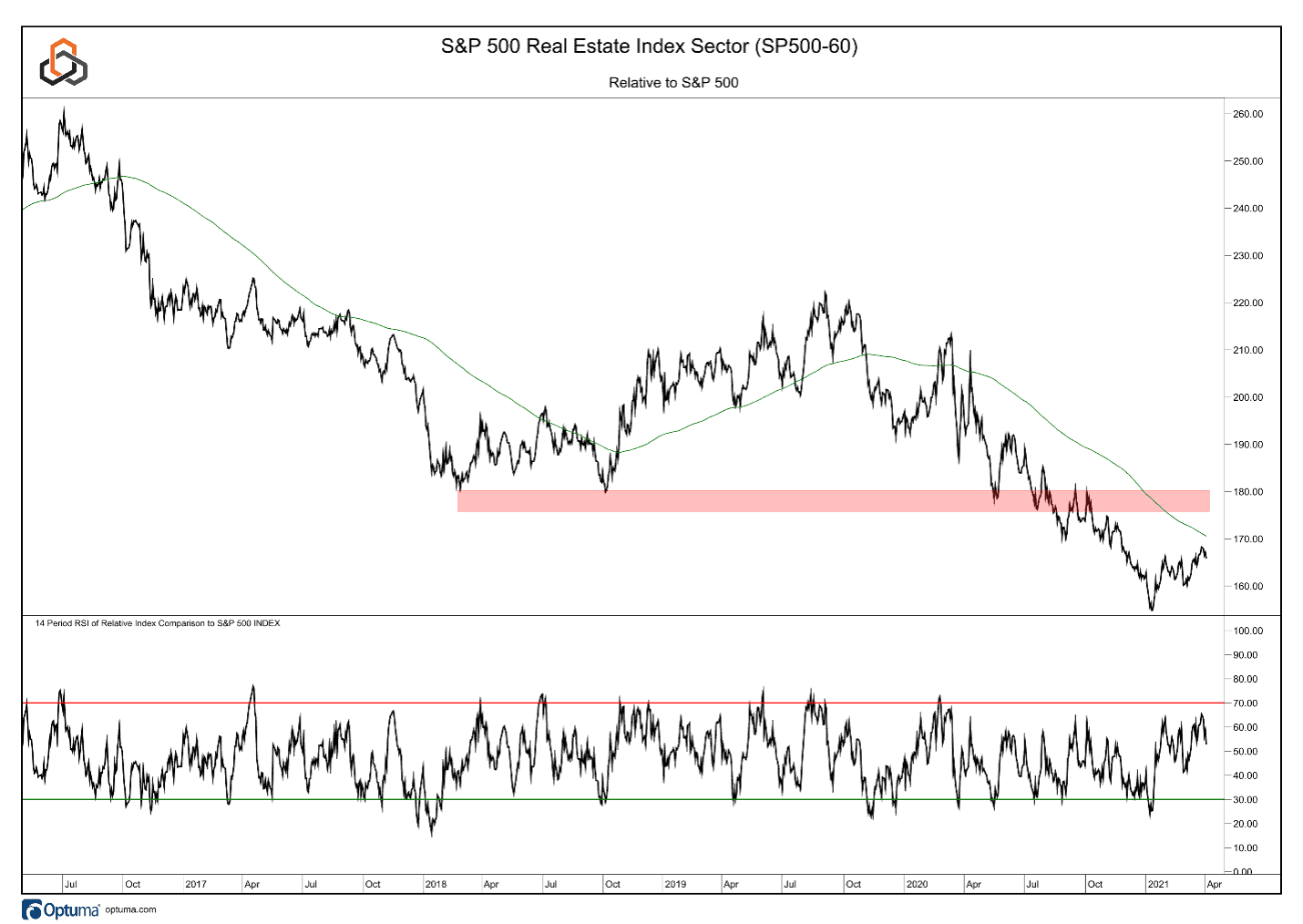
Utilities
The Utilities are the third “defensive” sector that has been in a long-term downtrend and remains below resistance and a declining 200-day moving average. A recent rally attempt took the RSI higher, but the indicator failed to exit bearish ranges. Below resistance and the moving average, odds favor continued underperformance.
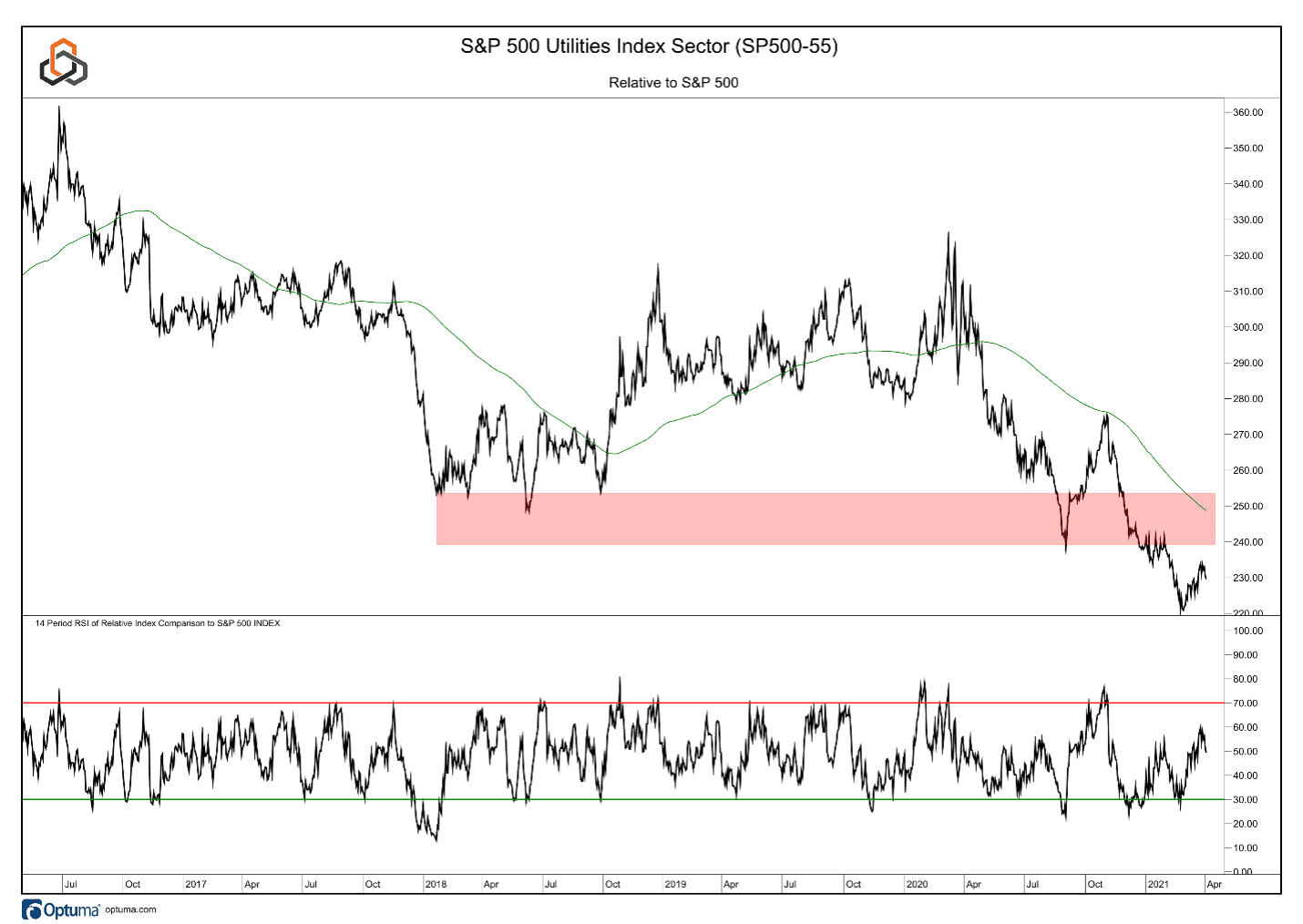
Health Care
The Health Care sector has been a relative chop-fest for the past five years. This is one of the more interesting sectors of the market since it has both “offensive” (Biotech, MedTech) and “defensive” (pharma) industries within it. The ratio is below the declining 200-day moving average and traded to a five-year relative low yesterday, extending down from resistance. The RSI is in bearish ranges.
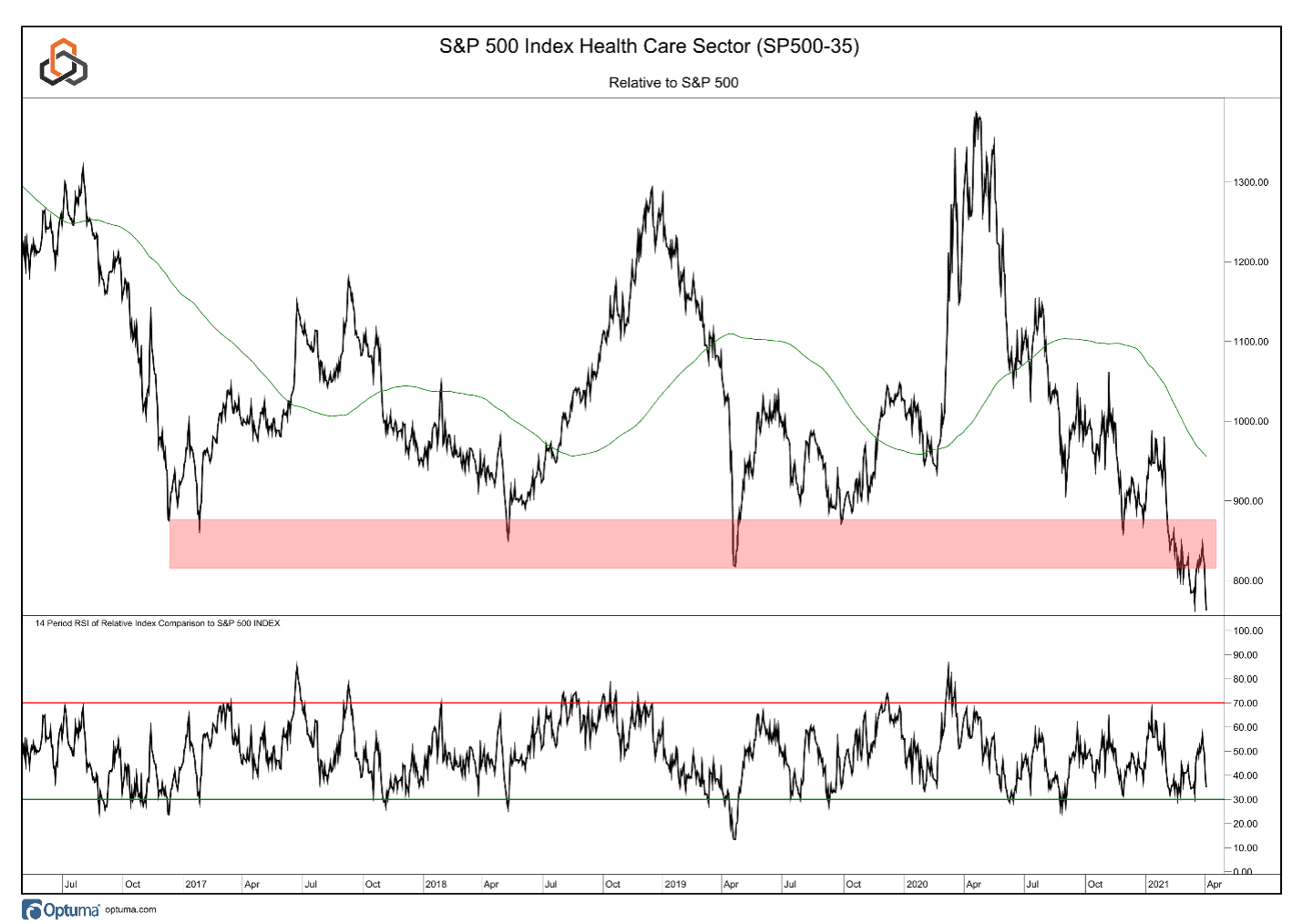
Consumer Discretionary
The Discretionary Sector appears to have completed a topping process and has tested important support at the 2018 / 2019 consolidation. The ratio is below the 200-day moving average which is moving from rising to flat. The RSI is in the middle of the range, not proving much of a “tell” in the near-term. Given the large weights for AMZN (22%) and TSLA (13%) within this group, it will be hard for much upside traction to take hold until those key stocks begin to move higher.
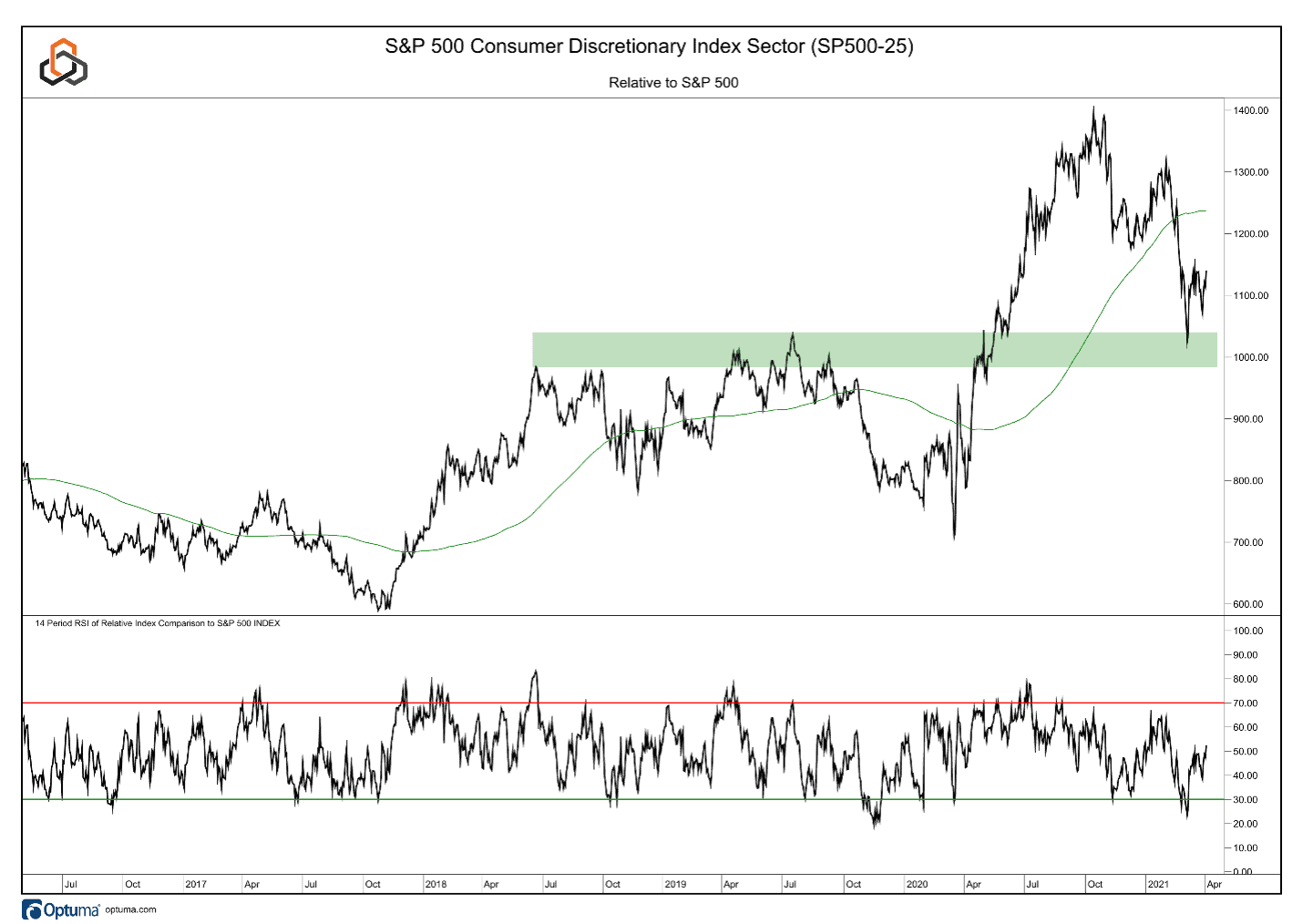
Energy
Since peaking on a relative basis in 2008, the Energy sector has been in secular decline. However, there is an interesting shift playing out. The group may be in the early stages of a trend transition as downside momentum appears to be letting up, with the RSI shifting higher. Breaking above resistance at the June 2020 peak will complete the relative change of trend.
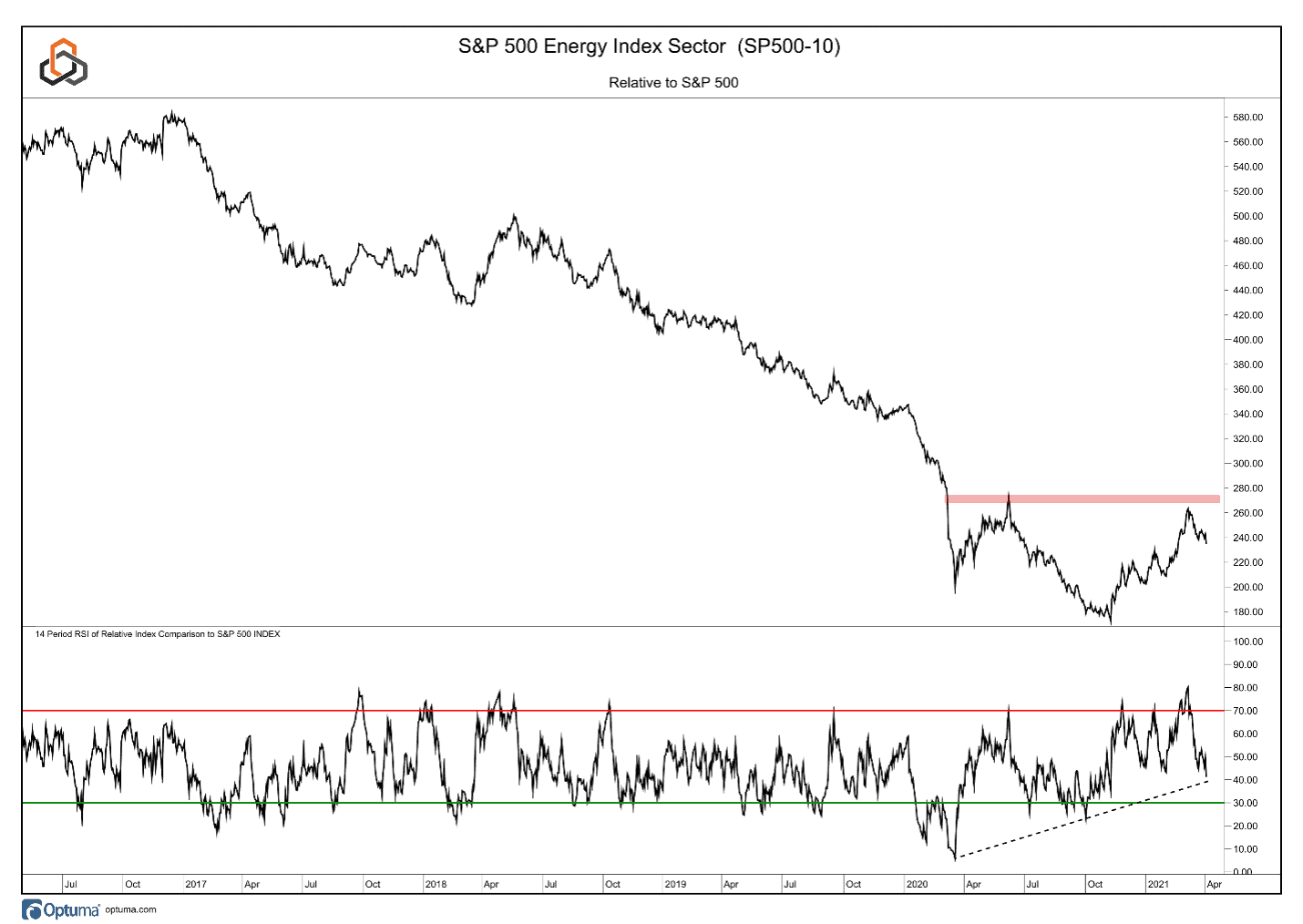
Take-Away
The relative trends for the various sectors of the S&P 500 continue to favor further upside for the broader market. The key driver of this view is the fact that the defensive areas of the market remain under pressure on a relative basis. In the near-term, the cyclical sectors are trading into or toward relative resistance while the “growth” themes have held support and are showing signs of stabilization.
